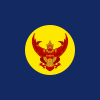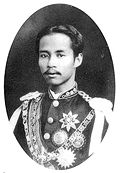
Phra Bat Somdet Phra Nangklao Chaoyuhua, personal name Thap, also styled Rama III, was the third king of Siam from the Chakri dynasty, ruling from 21 July 1824 to 2 April 1851.
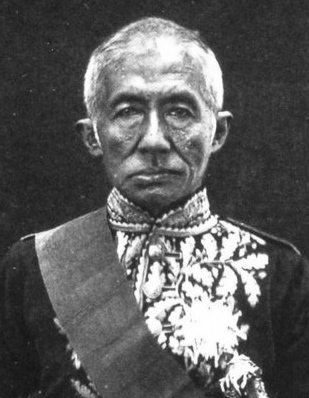
Mongkut was the fourth king of Siam from the Chakri dynasty, titled Rama IV. He reigned from 1851 until his death in 1868.

Vajiravudh was the sixth king of Siam from the Chakri dynasty, titled Rama VI. He reigned from 1910 until his death in 1925. King Vajiravudh is best known for his efforts to create and promote Siamese nationalism. His reign was characterized by Siam's movement further towards democracy and minimal participation in World War I. He had keen interests in Siamese history, archaeology, and literature, as well as economics, politics and world affairs, and founded the country's first university, Chulalongkorn University.

Prince Tisavarakumara, the Prince Damrong Rajanubhab was the founder of the modern Thai educational system as well as the modern provincial administration. He was an autodidact, a (self-taught) historian, and one of the most influential Thai intellectuals of his time.
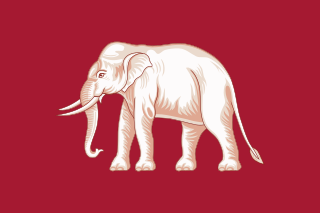
The Rattanakosin Kingdom, also known as the Kingdom of Siam after 1855, refers to the Siamese kingdom between 1782 and 1932 It was founded in 1782 with the establishment of Rattanakosin (Bangkok), which replaced the city of Thonburi as the capital of Siam. This article covers the period until the Siamese revolution of 1932.

Somdet Chaophraya Borom Maha Sri Suriwongse, whose personal name was Chuang Bunnag, was a prominent 19th century Thai figure who served as the regent during the early years of the reign of King Chulalongkorn.

Sri Savarindira, also known as Savang Vadhana. She was a half-sister and queen of King Chulalongkorn. After her first grandson's accession to power in 1935, she became known as Her Majesty Queen Sri Savarindira, The Queen Grandmother of Thailand title in Thailand is Somdetch Phra Phan Vassa Ayika Chao. All her children died before her and she lived to see her grandsons Ananda Mahidol and Bhumibol Adulyadej take the throne.

Prince Varna Vaidayakara, known in the West as Wan Waithayakon (1891–1976), was a Thai royal prince and diplomat. He was President of the Eleventh Session of the United Nations General Assembly (1956–1957), while serving as Thailand's Permanent Representative to the United Nations. He was a grandson of King Mongkut.

Prince Bhanurangsi Savangwongse, The Prince Bhanubandhu Vongsevoradej or His Royal Highness Prince Bhanurangsi Savangwongse, Prince Uncle was a son of King Mongkut of Siam and Queen Debsirindra.

Yugala Dighambara, Prince of Lopburi, was a son of King Chulalongkorn of Siam.

Jayanta Mongkol, the Prince Mahisara Rajaharudaya was a son of King Mongkut, Rama IV, and his Royal Consort Huang. He was 13 years younger than his brother, Chulalongkorn, who would become Rama V. The prince was a leading member of the progressive clique known as the "Young Siam", on whom King Chulalongkorn relied for support in his efforts to reform the country. At the king's insistence, the younger members of his family and extended family were all educated in Western ways, sometimes attending schools abroad.

Kitiyakara Voralaksana, 1st Prince of Chanthaburi was a Prince of Siam, a member of the Siamese Royal Family. He originated the House of Kitiyakara (ราชสกุลกิติยากร). His descendants use this royal surname. He is the paternal grandfather of Queen Sirikit, consort of King Bhumibol Adulyadej. Through Sirikit he is also the maternal great-grandfather of King Maha Vajiralongkorn, who has been King of Thailand since 2016.

The monarchy of Thailand is the constitutional form of government of Thailand. The king of Thailand is the head of state and head of the ruling Chakri dynasty.

Kingdom of Rattanatingsa or Kingdom of Chiang Mai was the vassal state of the Siamese Rattanakosin Kingdom in the 18th and 19th century before being annexed according to the centralization policies of Chulalongkorn in 1899. The kingdom was a successor of the medieval Lanna kingdom, which had been under Burmese rule for two centuries until it was captured by Siamese forces under Taksin of Thonburi in 1774. It was ruled by the Chet Ton dynasty and came under Thonburi tributary.

The Royal Standard of Thailand is the official flag of the King of Thailand. The present form was adopted in 1910 under Vajiravudh, superseding the first Royal Standard created by Mongkut in 1855. In 1979, the designs were codified by law; specifically in Article 2 of the Flag Act of 1979, which also regulated Thailand's other flags. The standard is currently used by Maha Vajiralongkorn, also known as Rama X, since 2016.

Wichaichan was a Siamese prince and member of the Chakri dynasty. He was the eldest son of Viceroy Pinklao and Princess Aim, and thus nephew to King Mongkut. Wichaichan succeeded his father by being appointed the Front Palace and Viceroy of Siam in 1868, during the reign of his cousin King Chulalongkorn. During his tenure the office of Front Palace was extremely powerful and rivalled that of the monarch's own. Inevitably the two forces clashed in the Front Palace crisis. Wichaichan was defeated and the power of the Front Palace was greatly diminished. After his death in 1885, the last vestiges of the title were abolished in favour of a crown prince. Notably, he is the only Front Palace that was elected by the council, not appointed by the king in accordance with the royal tradition, which is still considered as controversial and unorthodox practice to this day.
Thai traditional costumes vary by city and the ruler of each historical period. Thai clothes can be classified according to six distinct periods of history; beginning with the 13th century. Previously, traditional Thai clothes were worn daily; however, they are now only worn on auspicious functions such as Thai traditional marriage ceremonies.

The Front Palace, officially the Phraratchawang Bowon Sathanmongkhon (พระราชวังบวรสถานมงคล), was the residence of the royal holder of the same title during the early-to-mid Rattanakosin Kingdom. The palace was built at the same time as the Grand Palace, following the accession of King Rama I and the foundation of Rattanakosin as the capital city in 1782. It was located at the northern end of the inner fortified city, directly in front of the Grand Palace, where the king lived, and provided security to the city.
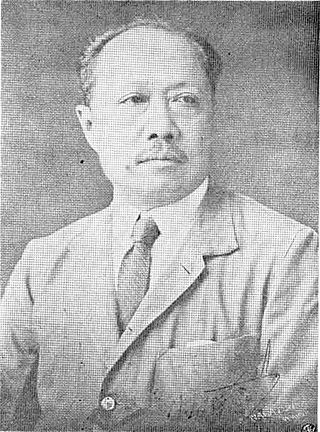
Prince Svasti Sobhana, the Prince Svastivatana Visishtha was a son of King Mongkut and Princess Consort Piam. As the sixtieth child of King Mongkut, he also had the same parents as the 3 queens of King Chulalongkorn, Queen Sunandha Kumariratana, Queen Savang Vadhana and Queen Saovabha Bhongsi. He was the father of Queen Rambai Barni.

Chandrmondol Sobhon Bhagiawati, the Princess Wisutkrasat also known as Princess Fa-ying or Somdetch Chow Fa-ying was a Princess of Siam and daughter of King Mongkut and Queen Debsirindra.









































